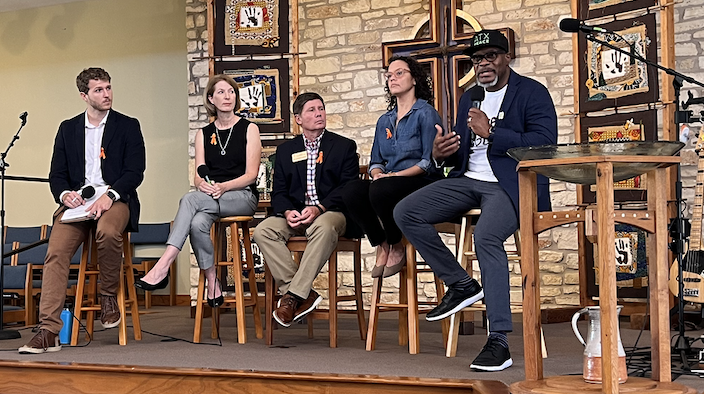
In Texas, we know that the culture and the politics around guns make addressing certain aspects of gun violence difficult. There has been significant pushback against any form of firearm regulation at the Texas legislature for decades making law changes incremental and creative.
One area where we have seen both bipartisan support and real direct community effects has been safe storage. Last legislative session our partners at Texas Gun Sense were able to add an amendment to House Bill 3, a large bill focused on school safety, that requires schools to share information on safe gun storage.
This was a significant step – safe storage practices, such as storing firearms unloaded, locked up, and separate from ammunition, have been shown to reduce suicides, mass shootings, and accidental shootings. By requiring schools to share information on safe storage practices, it encourages communities to have conversations about firearms and safety. That is critical to addressing not just gun violence, but also the culture around guns that enables violence.
Fortunately, we are seeing similar progress at the federal level. As a part of a series of executive orders by the White House concerning gun violence, it was announced that the Centers for Medicare and Medicaid Services (CMS), the federal agency that oversees Medicaid, is creating a process to reimburse healthcare providers for screening patients for gun injury risk, counseling them on safer storage practices, and sharing violence prevention resources.
Now what does this mean? Medicaid provides health insurance for low-income Americans. Often these same Americans are in communities that are at high risk for gun injury. Medicaid will be able to provide reimbursement to healthcare providers and hospitals that assess their patients’ exposure to firearms and violence, and then offer appropriate counseling.
This could mean that if a patient owns a gun or is in a house with one, they are provided information on safe storage and sometimes given a gun lock. Or it could mean that if a patient is in a neighborhood with high levels of intrapersonal or community violence, instead they are given violence prevention resources.
The program supports a national public health framing of gun violence and critically helps hospitals and care providers be a part of the preventative side of things, something health professionals are eager to do. Last month Texas Impact held a panel discussion on gun violence at Shepherd of the Hills Presbyterian Church. One of the panelists, trauma surgeon Dr. Cardenas, spoke about how prevalent gun violence is in her work. She sees shootings every day. One of her biggest frustrations is how reactive hospital work is. They see people after they have already been shot and often that is too late.
By further ingraining hospitals and healthcare into the gun violence prevention space, we are building upon community violence intervention programs that seek to leverage key community members and institutions to holistically address the root causes of violence. A major part of the community approach is culture change i.e. providing role models to youth, having conversations with parents, and helping people have their needs met.
That means talking about guns in schools, hospitals, and the home. Firearms are a dangerous tool. If they are to continue to be a major facet of American life, then that means we have to be responsible stewards. Our culture has to reflect a willingness to handle guns seriously and above all else put the health and safety of our neighbors first. We need to talk about guns.
